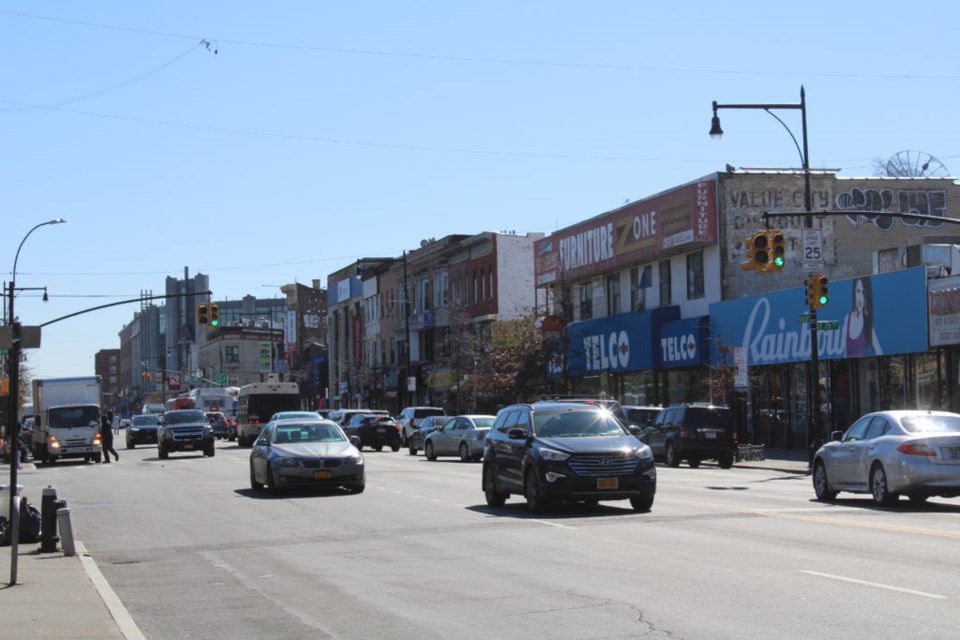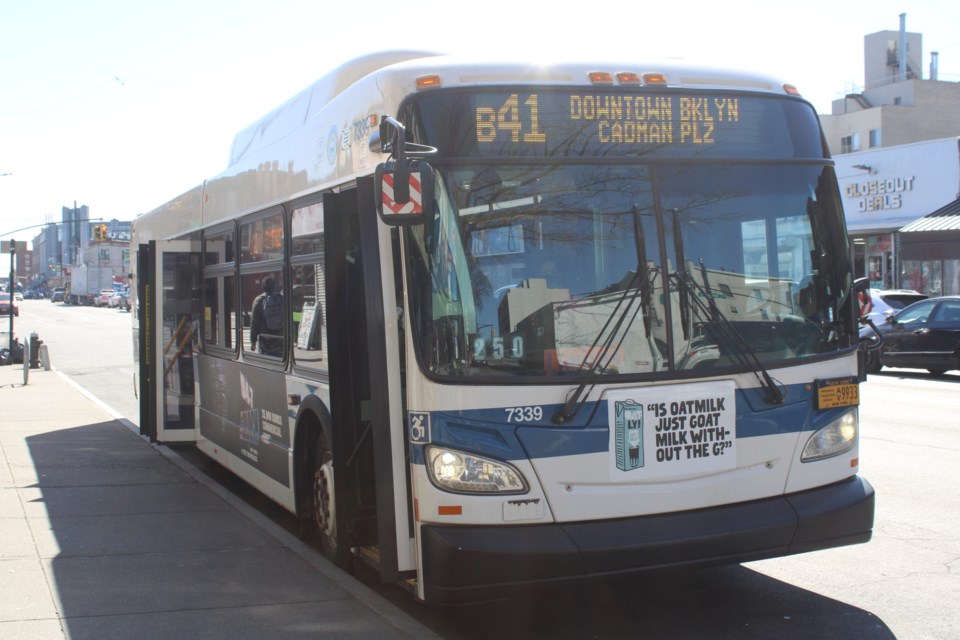It’s one of the busiest roads running through the heart of Brooklyn, but with its notoriously slow bus route — the B41 — is it time for a dedicated bus lane on Flatbush Avenue? Some local leaders seem to think so.
A spokesperson for Councilmember Rita Joseph, who strongly supports a bus lane on Flatbush Ave., told BK Reader the current bus service just wasn't serving local residents.
“We get frequent complaints about the speed of the buses, about inconsistent subway service, because the mass transit in the city has not received the investment that it deserves.”
The Councilmember’s position is in line with Mayor Eric Adams’ ambitious plan to expand the city’s bus lanes by 150 miles by the end of his first term in 2025. Former Mayor Bill de Blasio also set out to improve bus speeds, to mixed results.
Disability rights activists say that a bus lane on Flatbush Avenue may also make travel easier for disabled commuters.
“Access to accessible public transportation for New Yorkers on Flatbush Avenue, a well-known retail and social destination, would make all the difference to someone who actively chooses to be as independent as possible" Leonard Blades, a Brooklyn resident and executive vice chair of the CUNY Coalition for Students with Disabilities, said.
But just how slow is Flatbush Ave's B41?
The Bus Turnaround Coalition gives the B41 route a grade of F, ranking it worse than 99.6% of buses in NYC. According to the MTA, the B41, whose route stretches from Downtown Brooklyn to Marine Park, travels at around 6.6mph. It was the 10th busiest bus route in New York City in 2020, with more than 5 million riders.

At a rally at Borough Hall on Monday, transit advocates were joined by NYC politicians and bus riders for the relaunch of the #BetterBuses campaign, first launched in 2016.
In tandem with the rally, the Bus Turnaround Coalition released a new report Monday, unveiling a list of recommendations for the MTA and DOT, including to: “Scale up the redesign of streets to enhance bus service by creating a citywide network of bus lanes and traffic signals that prioritize buses."
"The last administration in City Hall laid the groundwork and built a toolkit for faster buses. Now it's up to Mayor Adams to bring the program to scale and deliver much faster service for bus riders in every neighborhood across the city,” Riders Alliance Senior Organizer Jolyse Race said at the rally. She added that Governor Kathy Hochul must also ensure the MTA had the resources to improve the routes.
But are bus lanes actually successful?
The DOT says they have a goal of implementing 20 miles of new or improved bus lanes in 2022. Just four miles of bus lanes were added to the city in 2021, and 16.3 in 2020.
“The data shows our busways and bus lanes have made service faster and more reliable for New Yorkers and we’re looking forward to building on their success with miles of new dedicated space," Vin Barone, a spokesperson for the DOT, told BK Reader.
"Local buses serve over one million daily riders, many of whom are working class and people of color, and investing in our bus system is a critical part of our commitment to equity in transportation."
A bus lane installed on Jay St. in Downtown Brooklyn in 2020 increased bus speeds from 4mph to 6mph. And 2019, when a bus lane was added to 14th St. in Manhattan, bus speeds increased by 24%.
"Buses like the B41 provide essential transit to Flatbush residents, many of whom live far from subways or cannot access the inaccessible stations in their neighborhoods,” Liz Denys, an organizer with Flatbush Streets for People, said.
“But the current service is slow and unreliable because buses are often stuck in traffic. A bus lane on Flatbush Avenue would help ensure bus riders reliably get to their destinations on time."




